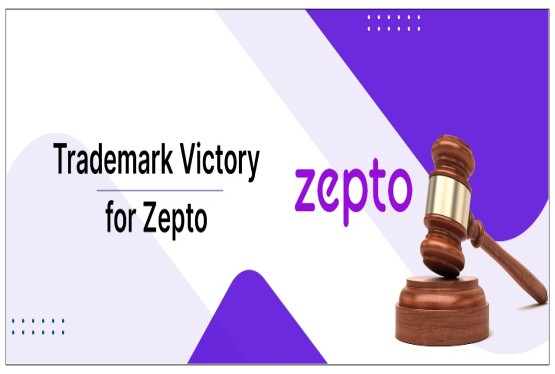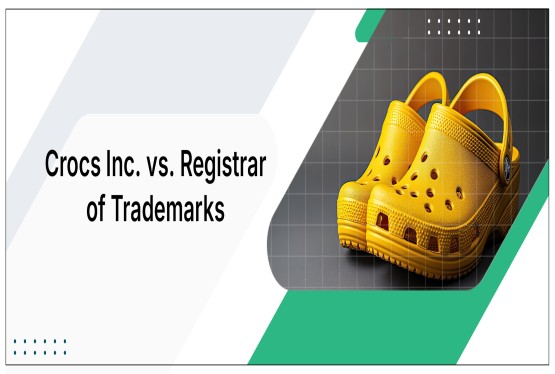Section 57 of the Trade Marks Act, 1999, is a pivotal provision that empowers the Trade Marks Registry and the Intellectual Property Appellate Board (IPAB) to rectify the Register of Trade Marks. This section plays a crucial role in ensuring the accuracy and integrity of the register, safeguarding the rights of legitimate trademark owners, and promoting fair competition in the marketplace.
Key Provisions of Section 57 of the Trade Marks Act, 1999
Section 57 outlines various grounds on which a person aggrieved by a trademark registration can seek rectification of the register. These grounds include:
- Errors or Omissions in the Register
- Incorrect Details: If the register contains errors in the details of a registered trademark, such as the owner's name, address, or goods or services covered by the trademark.
- Missing Information: If the register lacks essential information, such as the filing date or registration number of a trademark.
- Contravention of the Act
- Lack of Distinctive Character: If a registered trademark lacks inherent distinctiveness or has become generic.
- Deceptive Similarity: If a registered trademark is deceptively similar to an earlier registered trademark, causing confusion or deception among consumers.
- Contrary to Public Policy or Morality: If a registered trademark is offensive, immoral, or contrary to public interest.
- Failure to Comply with Conditions
- Non-use: If a registered trademark has not been genuinely used for a continuous period of five years.
- Breach of Conditions: If a registered trademark is subject to specific conditions and the owner fails to comply with them.
Importance of Section 57 of the Trade Marks Act, 1999
Section 57 serves several important functions:
- Protecting the Rights of Trademark Owners:
- By removing invalid or misleading registrations, Section 57 safeguards the rights of legitimate trademark owners.
- It prevents infringement and dilution of valuable trademarks.
- Promoting Fair Competition:
- By removing trademarks that create confusion or deception, Section 57 fosters fair competition in the marketplace.
- It ensures that consumers can make informed choices based on accurate brand information.
- Maintaining Public Confidence:
- By ensuring the accuracy and reliability of the trademark register, Section 57 enhances public confidence in the trademark system.
- It helps to prevent consumer confusion and fraud.
Understanding Section 57(4) of the Trade Marks Act, 1999: Suo Motu Power of Rectification
A particularly important aspect of Section 57 is subsection (4), which empowers the Registry or IPAB to take suo motu action to rectify the register. This means that the authorities can initiate proceedings to remove or modify a registered trademark, even without a formal application from an aggrieved party.
The suo motu power under Section 57(4) is exercised when the concerned authority identifies errors, omissions, or discrepancies in the register that may affect the rights of trademark owners or the public interest. This power is crucial for ensuring the integrity of the register and for addressing issues that may not be brought to the attention of the authorities through formal applications.
Grounds for Invocation of Section 57(4) of the Trade Marks Act, 1999
The Registry or IPAB can invoke Section 57(4) in the following circumstances:
- Errors or Omissions in the Register:
- Incorrect Details: If the register contains errors in the details of a registered trademark, such as the owner's name, address, or the goods or services covered by the trademark.
- Missing Information: If the register lacks essential information, such as the filing date or the registration number of a trademark.
- Contravention of the Act:
- Lack of Distinctive Character: If a registered trademark lacks distinctive character and is not capable of distinguishing the goods or services of one undertaking from those of another.
- Deceptive Similarity: If a registered trademark is deceptively similar to an earlier registered trademark, leading to confusion or deception among consumers.
- Contrary to Public Policy or Morality: If a registered trademark is contrary to public policy or morality, such as being offensive or misleading.
- Failure to Comply with Conditions:
- Non-Use: If a registered trademark has not been used for a continuous period of five years, the owner may be required to demonstrate genuine use or face cancellation.
- Breach of Conditions: If a registered trademark is subject to specific conditions, such as territorial restrictions or licensing obligations, and the owner fails to comply with these conditions.
Procedure under Section 57(4) of the Trade Marks Act, 1999
- Notice to Parties:
- The Registry or IPAB will issue a notice to the registered trademark owner and any other interested parties, informing them of the proposed action.
- The notice will typically outline the specific grounds for the proposed action and provide a reasonable time frame for the parties to respond.
- Opportunity to Be Heard:
- The parties will be given an opportunity to submit written representations and evidence in support of their case.
- They may also request a hearing to present oral arguments before the Registry or IPAB.
- Decision and Order:
- After considering the submissions and evidence, the Registry or IPAB will issue a decision and order.
- The order may direct the rectification of the register by adding, removing, or modifying entries as necessary.
- The order may also include directions for publication of the rectification in the Trade Marks Journal.
Importance of Section 57(4) of the Trade Marks Act, 1999
Section 57(4) plays a vital role in maintaining the accuracy and integrity of the trademark register. By enabling the Registry or IPAB to take suo motu action, this provision helps to:
- Protect the Rights of Trademark Owners: By removing invalid or misleading registrations, Section 57(4) ensures that legitimate trademark owners can protect their rights and prevent infringement.
- Promote Fair Competition: By removing trademarks that create confusion or deception, Section 57(4) fosters fair competition in the marketplace.
- Maintain Public Confidence: By ensuring that the trademark register is accurate and reliable, Section 57(4) helps to maintain public confidence in the trademark system.
Conclusion
Section 57 of the Trade Marks Act, 1999, is a powerful tool for ensuring the accuracy and integrity of the trademark register. By providing various grounds for rectification and empowering the Registry and IPAB to take suo motu action, this section plays a crucial role in protecting the rights of trademark owners, promoting fair competition, and safeguarding the interests of consumers. It is essential for trademark owners to be aware of this provision and to take steps to ensure that their registrations are accurate and valid.
FAQs
- What is the purpose of Section 57 of the Trade Marks Act, 1999?
Section 57 is designed to rectify errors, omissions, and discrepancies in the Register of Trade Marks. It empowers the Trade Marks Registry and the Intellectual Property Appellate Board (IPAB) to take action to ensure the accuracy and integrity of the register.
- What are the grounds for rectification under Section 57?
Section 57 provides several grounds for rectification, including errors or omissions in the register, contravention of the Act, and failure to comply with conditions.
- What is the suo motu power under Section 57(4)?
Section 57(4) empowers the Registry or IPAB to initiate rectification proceedings on its own, without a formal application from an aggrieved party. This is known as the suo motu power.
- What is the procedure for rectification under Section 57?
The procedure involves issuing a notice to the registered proprietor, providing an opportunity to be heard, and finally, passing an order rectifying the register.
- What is the importance of Section 57 in protecting trademark rights?
Section 57 plays a crucial role in protecting trademark rights by ensuring the accuracy of the register, preventing confusion and deception, and promoting fair competition.






























_(b)_of_the_Trademark_Act,_1999_(1)_crop10_thumb.jpg)



_crop10_thumb.jpg)




























_crop10_thumb.jpg)
_crop10_thumb.jpg)






_crop10_thumb.jpg)








_crop10_thumb.jpg)
_crop10_thumb.jpg)



_crop10_thumb.jpg)





























_crop10_thumb.jpg)

















_crop10_thumb.jpg)






_crop10_thumb.jpg)











































































































































_crop10_thumb.jpg)




































_crop10_thumb.jpg)












_crop10_thumb.jpg)






















